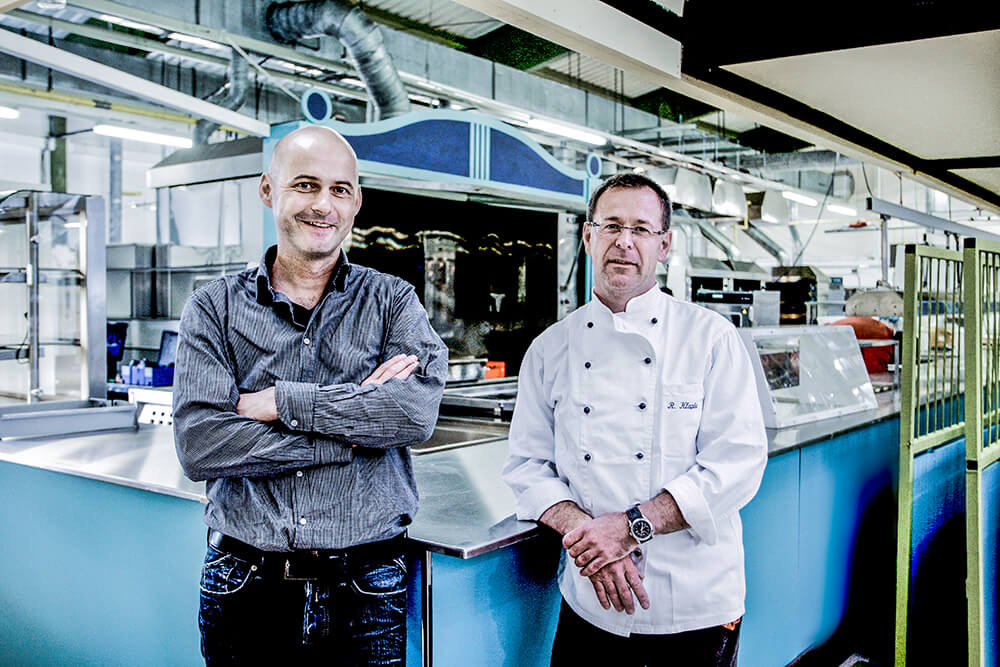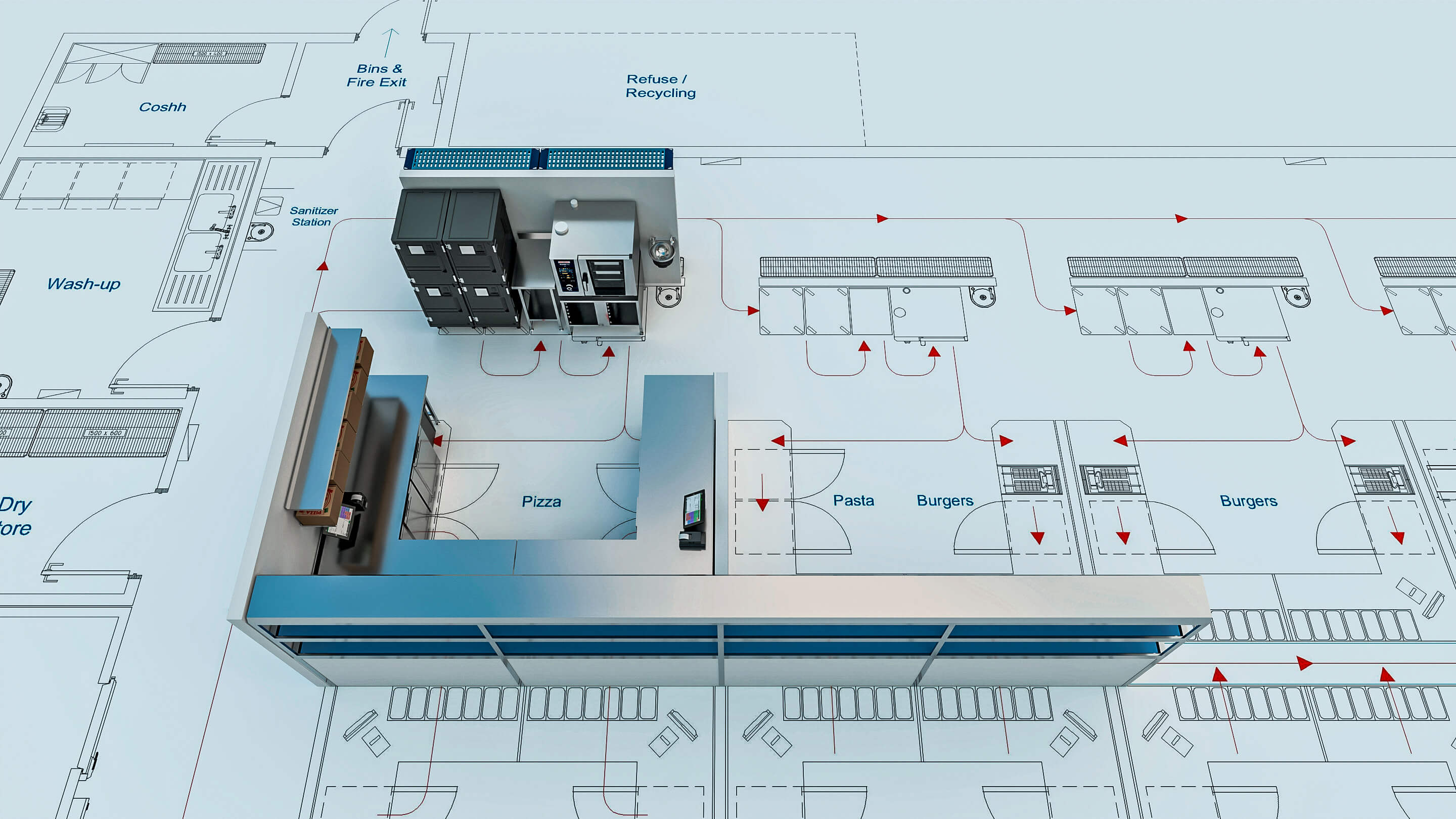
Norbert Friedl (left) and head chef Raimund Klapka in an interim kitchen / Image: Telia
You design interim kitchens. What exactly does that mean?
Mostly, interim kitchens involve special circumstances. For example, if a building is being renovated, the existing kitchen will have to move temporarily. That means the kitchen staff has to work in an unfamiliar environment, often with different equipment, and suddenly the routines they’ve developed over years are thrown off. But kitchen operations have to continue just like always. Diners can’t notice the difference!
What’s your recipe for success?
We don’t design “makeshift” kitchens. Our interim kitchens are planned using state-of-the-art commercial food service technology; they’re exceptionally ergonomic and enable highly efficient work processes. Telia is from the Greek word for “perfect” – and that’s the standard we set for ourselves! We’ve been interim kitchen specialists for 20 years now, and we use only the best equipment, made by companies who also offer us a reliable customer service network. All of our combi-steamers are from Rational, for example, and our dishwashers are all from Winterhalter. And, of course, we take advantage of digital networking options like ConnectedCooking.

Image: RATIONAL AG
Who are your customers?
Telia interim kitchens are everywhere! You might find them at a company open house, a sports event like Formula 1 or the Skiing World Championships, or as a large corporate kitchen that’s been in use for a year or more. A lot of the Oktoberfest tents use Telia kitchens as well. Those are the largest kitchens we design, in fact. Each beer tent seats up to 9,000 people, and on average those seats are filled twice per day, which means preparing, storing, and serving food for 18,000 people “just in time” – with the dishwashers running full speed, of course! Telia delivers ten tractor-trailers of kitchen equipment to Oktoberfest each year, including one just for replacement units and parts. We remain on-site the entire time to help ensure operational safety.
So does anything make you lose your cool anymore?
Building codes and safety regulations! (laughs) Seriously, though, those are really strict, and each kitchen has to be approved. And then sometimes Nature sets limitations on us at large-scale events. One example was in January 2019, when it snowed so heavily before the World Biathlon Championships in Ruhpolding that deliveries were impossible for several days. Even so, we still managed to get the entire infrastructure ready on time – the VIP-area catering as well as the athlete and employee food service!
Planning interim kitchens in advance precisely can’t be easy. How do you it?
Above all, we plan each kitchen individually with each customer. When it comes to the kitchen itself – cooking, washing, logistics – we do the planning ourselves, because we have decades of experience there. For peripheral stuff like air conditioning, ventilation, and the building shell, we have long-term partners that are specialized in each area, so they handle dimensioning in that regard.

Image: RATIONAL Webinar
How quickly can Telia deliver one of these kitchens?
Depends. With interim kitchens for sporting events, it usually takes four weeks from when the order comes in until when the kitchen is ready to use. Interim kitchens for 1,000 company employees involve bidding, planning, government permits, and construction – that can take up to five months.
Let’s finish by gazing into our crystal ball: what will interim kitchens be like in the year 2050?
Predicting 30 years into the future is really going out on a limb. I’ll try, though: appliances and equipment will all be networked and operate autonomously; people will only have supervisory duties. Operators won’t own equipment anymore – they’ll pay to use the kitchen. That will apply to “fixed” kitchens, too.
















